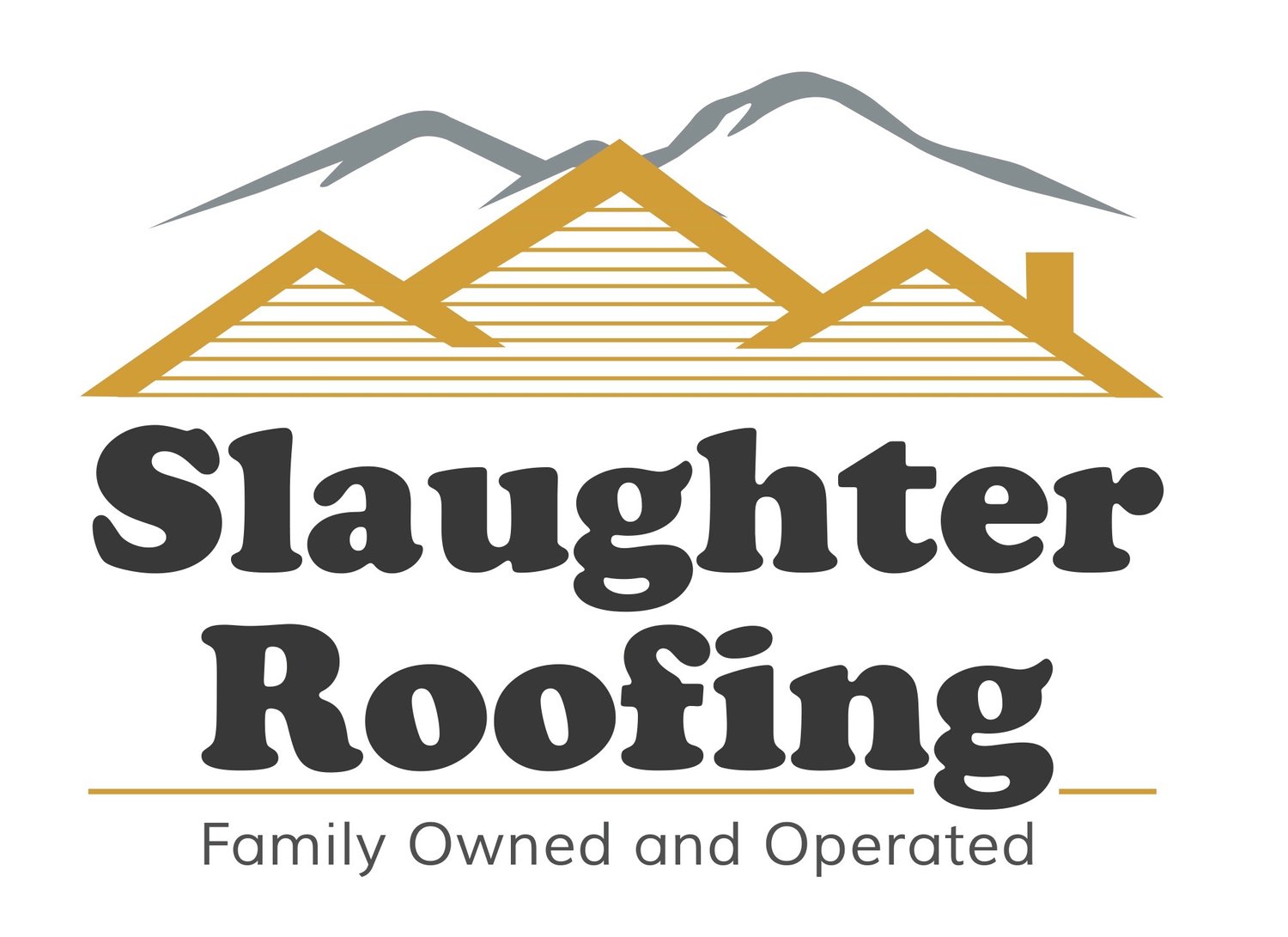The Icy Intruder: Beware of Ice Dams on Your Roof
/As we have already had our first round of snowfall this year, it's crucial to be aware of a hidden danger that can threaten your home this winter: ice dams. At Slaughter Roofing, your Northern Colorado, family-owned roofing company, we want to equip you with the knowledge you need to protect your home and explain how we safely remove ice dams.
Understanding Ice Dams
Ice dams are a wintertime menace that forms on your roof's edges. They occur when warm air from your home rises and melts the snow on your roof, which then refreezes at the eaves. This freezing and thawing process leads to the formation of ice dams.
Why Ice Dams are Dangerous
Ice dams pose several threats to your home:
Roof Damage: The weight of ice dams can stress your roof's structure and materials, potentially leading to leaks and structural damage.
Water Damage: As ice dams block the natural flow of melting snow, water can seep beneath your shingles and into your home. This can cause water damage to your ceiling, walls, and insulation.
Mold and Mildew: Moisture from melting snow can create an ideal environment for mold and mildew growth, which can harm your health and home.
Icicle Formation: Icicles hanging from your roof can be beautiful but dangerous. Falling icicles can cause injury or damage property.
How Slaughter Roofing Safely Removes Ice Dams
Steam Options
Using steam to remove ice dams from your roof is a highly effective and safe method. Here's why it's our preferred option:
Precision and Control: Steam provides a precise and controlled way to melt ice dams. The equipment used allows professionals to direct the steam precisely at the ice dams, avoiding any damage to your roof's materials.
Gentle on Your Roof: Steam is a gentle option that doesn't involve the risk of physical damage that other methods, like chipping or hacking, might pose. It ensures your shingles, gutters, and roofing structure remain intact.
Avoiding Additional Moisture: Unlike other methods like hot water, steam doesn't create additional moisture that can exacerbate the ice dam problem. It melts the ice efficiently, allowing water to safely flow away.
Environmentally Friendly: Steam doesn't involve the use of chemicals or rock salt, making it an environmentally friendly choice for ice dam removal.
Heat Tape
Heat tape, also known as roof heat cables or gutter heating cables, is a proactive solution to prevent ice dams from forming on your roof's eaves. It works by providing consistent low-level heat to the problem areas, such as the edges of your roof where ice dams typically originate.
How Heat Tape Works
Installation: Heat tape is installed along the eaves and gutters of your roof. It's usually affixed in a zigzag pattern to cover the areas most susceptible to ice dam formation.
Temperature Control: Heat tape is equipped with a thermostat or temperature sensor that monitors the temperature in your roof's vicinity. When the temperature drops to a level that suggests ice dam formation, the heat tape activates.
Gentle Heat Emission: When activated, the heat tape emits a low and consistent amount of heat. This gentle heat is just enough to prevent the snow on your roof's edge from freezing, ensuring it melts and drains off the roof naturally.
Preventing Ice Dams: By keeping the roof edge above freezing, heat tape prevents the formation of ice dams. It ensures that the snowmelt flows freely into the gutters and downspouts, reducing the risk of water infiltration and roof damage.
Roof Snow Removal
In some cases, removing the snow from your roof can prevent ice dams. Our experts use the right tools to safely remove snow without damaging your roof.
It's crucial to remember that a professional is equipped with the knowledge to ensure proper functionality and avoid potential hazards associated with removing ice dams.
Dangerous Ways Not to Remove Ice Dams
Attempting to remove ice dams yourself can lead to costly and potentially dangerous consequences. Avoid using tools like chisels, hammers, or picks to chip away at ice dams can damage your shingles, gutters, and even the structure of your roof. Do not use hot water to melt ice dams, as it can refreeze and make the situation worse, or it may simply add to the ice dam. Throwing salt or chemicals onto your roof can harm your shingles and gutters, and the runoff can damage your landscaping. High-pressure washing is also very dangerous and can break shingles, compromise your roof's waterproofing, and lead to costly repairs.
As we head into winter, it's crucial to stay vigilant about the potential danger of ice dams on your roof. Remember, safety should be your top priority. If you suspect ice dams or need assistance in safely removing them, don't hesitate to contact Slaughter Roofing at 970-303-7881. Our family-owned company is here to keep your home safe and warm during the cold months, so you can enjoy a cozy and worry-free winter.






